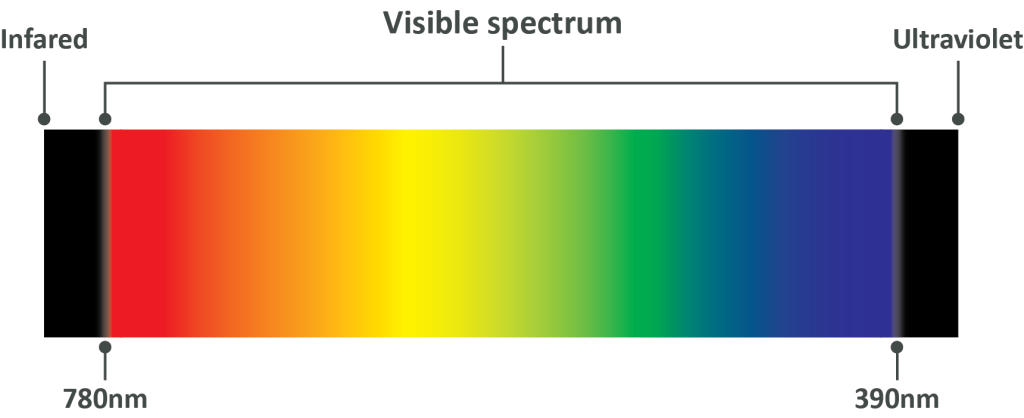Improving your sleep – light exposure
Sleep improvement doesn’t start when you get into bed, it starts a long time before that. The first key aspect of getting good sleep is accurately calibrating your SCN by exposing yourself early to natural light.
Exposing your eyes to natural light early in the morning has a re-setting effect on your circadian rhythm known as phase advancement which can not only wake you up due to suppression of melatonin release, but can create an earlier onset of melatonin release later in the day. Light exposure close to sleep is unadvisable, as this can both alter your SCN calibration and directly impair melatonin release meaning that late-night light exposure can impair your natural sleep processes.

Visible light occurs on a spectrum of different wavelengths ranging from very short wavelength purple light to very long wavelength red light, and it seems that it is the short-wavelength blue light (which is that emitted by the sun) which creates a phase-shifting effect in your SCN via your retina. If you are unable to expose yourself to natural light in the morning (perhaps you work shifts or it’s simply not light when you travel to work due to short winter days)various blue-light emitting lamps can be purchased which, when used for 5-10 minutes, have the same effect. Just looking out of a window on a bright day can have a similar effect – ideally this should be repeated as often as is possible throughout the day.
Unfortunately, TV sets, tablets and mobile phones all emit the same blue light and this can alter melatonin release late in the day. Wearable blue light blocking goggles are available and many devices have apps which can cut the blue light out of their screens, but by far the most effective method is to turn off screens an hour before planned sleep and undergoing a relaxing night time routine.